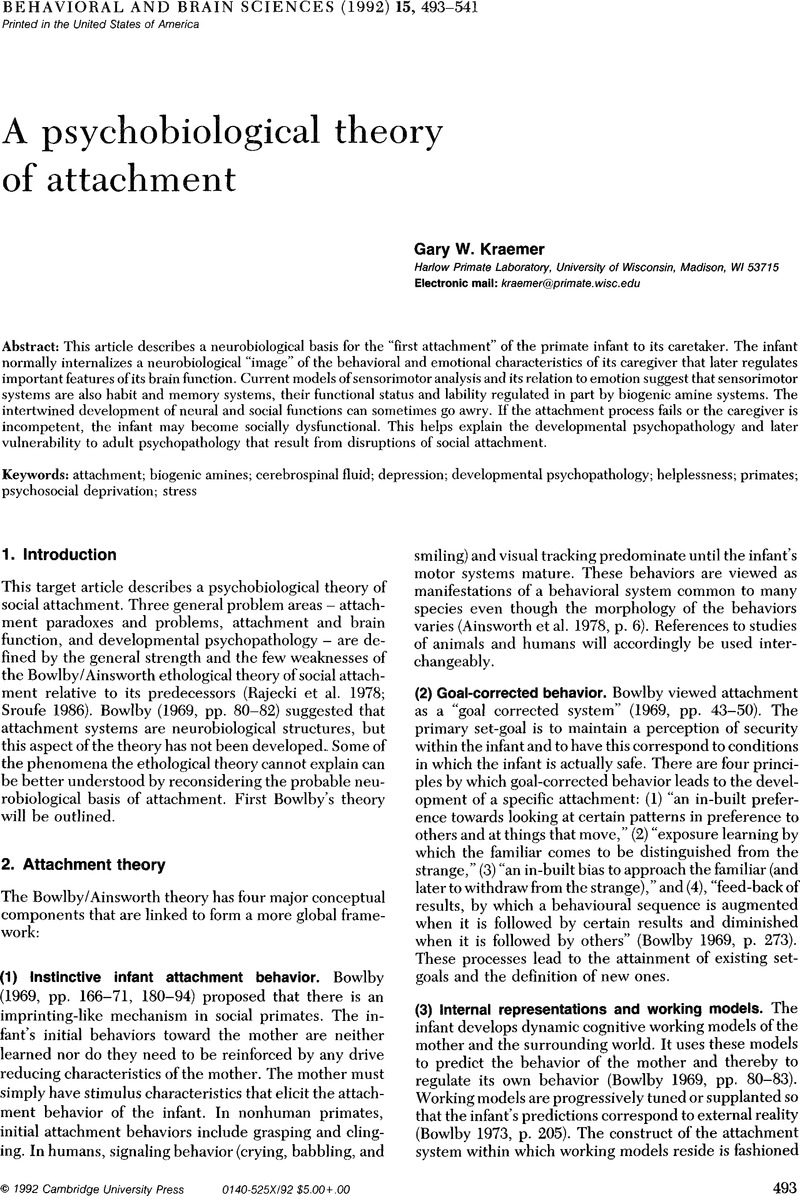Crossref Citations
This article has been cited by the following publications. This list is generated based on data provided by Crossref.
Clarke, A. S.
1993.
Social rearing effects on HPA axis activity over early development and in response to stress in rhesus monkeys.
Developmental Psychobiology,
Vol. 26,
Issue. 8,
p.
433.
KRAEMER, GARY W.
1997.
Psychobiology of Early Social Attachment in Rhesus Monkeys Clinical Implications.
Annals of the New York Academy of Sciences,
Vol. 807,
Issue. 1,
p.
401.
KRAEMER, GARY W.
SCHMIDT, DENNIS E.
and
EBERT, MICHAEL H.
1997.
The Behavioral Neurobiology of Self‐injurious Behavior in Rhesus Monkeys.
Annals of the New York Academy of Sciences,
Vol. 836,
Issue. 1,
p.
12.
Kraemer, Gary W.
1997.
Biosocial Bases of Violence.
p.
207.
Kraemer, Gary W.
2004.
Sensorische Integration.
p.
47.
Kraemer, Gary W.
Moore, Colleen F.
Newman, Timothy K.
Barr, Christina S.
and
Schneider, Mary L.
2008.
Moderate Level Fetal Alcohol Exposure and Serotonin Transporter Gene Promoter Polymorphism Affect Neonatal Temperament and Limbic-Hypothalamic-Pituitary-Adrenal Axis Regulation in Monkeys.
Biological Psychiatry,
Vol. 63,
Issue. 3,
p.
317.
Gunnar, Megan R.
and
Vazquez, Delia
2015.
Developmental Psychopathology.
p.
533.



